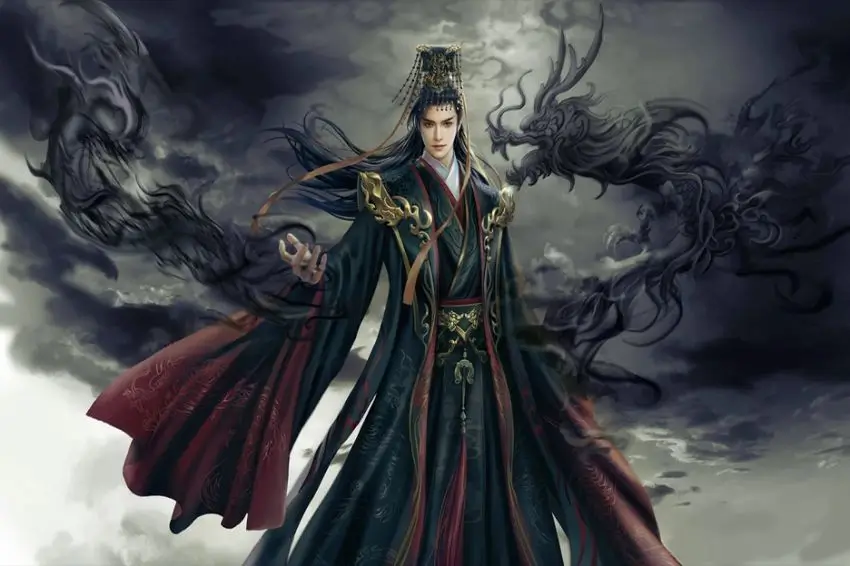Donghua, or Chinese-made animation, is now increasingly popular among global animation lovers. With its unique style and stories full of cultural values, donghua is slowly rivaling the popularity of Japanese anime. However, do you know when donghua first appeared? To answer this question, we must trace the long history of animation in China, from the early 20th century to the current digital era.
What is Donghua?
Before discussing its history, let’s first understand the meaning of donghua. The word “donghua” (动画) literally means “moving picture” in Mandarin. This term is used in China to refer to all types of animation, both locally and internationally made. However, in a global context, donghua refers more to animation made by Chinese studios and animators.
Donghua has distinctive characteristics in visual and narrative style. Some donghua are inspired by traditional Chinese art, mythology, folk legends, and even wuxia (martial arts) stories. This is where donghua becomes unique and different compared to Japanese anime or Western animation.
The World’s First Donghua: “Uproar in the Studio” (1926)
The history of donghua began in 1926 with a short animated film titled “Uproar in the Studio” (大闹画室). This film was made by two legendary brothers in the world of Chinese animation, Wan Laiming and Wan Guchan.
Although this film is now considered lost and is not available in physical form, from historical records and film articles, it is known that Uproar in the Studio is a combination of live-action and animation. The story focuses on a cartoonist who is in conflict with his own animated character creation. This concept was very revolutionary for its time.
This work made China one of the pioneering countries in the world of animation, on par with the United States and Germany who also developed animation during the same period.
Early Donghua Golden Age: “Princess Iron Fan” (1941)
After its initial success, the development of donghua experienced a major surge with the release of China’s first feature-length animated film, “Princess Iron Fan” (铁扇公主) in 1941. This film was also made by Wan Laiming and his brothers.
What makes Princess Iron Fan so historic is the fact that it:
- Was the first feature-length animated film in Asia
- Was made during the Japanese colonial period in Shanghai
- Influenced many Asian animators, including Osamu Tezuka, the creator of Astro Boy
Princess Iron Fan was adapted from the classic novel “Journey to the West” and featured outstanding animation by the standards of the technology at the time. The film was a major inspiration for the development of Asian animation.
- Heaven Official's Blessing (Tian Guan Ci Fu): A Complete Guide
- How Many Episodes Does the Donghua Lingwu Continent Have? A Complete Guide
- Is Mo Dao Zu Shi a BL? A Complete Guide to the Genre and Context
- Wu Dong Qian Kun Season 6: When is the Official Air Date? Check Out the Leaks!
- Luo Zheng: The Protagonist of Donghua Apotheosis
Development of Donghua in the Modern Era
After the classical era, the development of donghua was hampered by political and social events such as World War II and the Cultural Revolution. However, since the 1980s, donghua has risen again and started to show its fangs.
In 1999, one of the most successful donghua internationally was “Lotus Lantern” (宝莲灯), an animated film based on a classic Chinese legend. Its eye-catching visuals and emotional narrative made it a favorite among many local audiences.
Entering the 2000s, donghua began to undergo a major transformation thanks to advances in digital technology. New studios emerged, and many of them began producing more modern animated series that catered to the global market.
Donghua in the Era of Streaming and Globalization
Today, donghua is enjoying a resurgence in popularity thanks to streaming platforms such as Bilibili, Tencent Video, and iQIYI. In fact, several donghua have been broadcast globally via Netflix and Crunchyroll, such as:
This development marks a new era where donghua is not only in demand by local audiences, but also by international audiences. Charming character designs, high animation quality, and epic stories taken from Chinese culture and history are the main attractions.
Influence of Donghua on Popular Culture
Donghua is not only entertainment, but also a tool for spreading culture. Many donghua promote Confucian, Taoist, and Buddhist values, and feature elements of traditional Chinese history, architecture, and art.
With the increasing number of global fans, donghua is now part of China’s soft power in introducing its culture to the world. This is similar to what Japan does with anime and South Korea does with K-dramas and K-pop.
Conclusion
So when did donghua first appear? The answer is in 1926, with the Wan Brothers’ Uproar in the Studio. Since then, donghua has come a long way: from simple experiments, through classic heydays like Princess Iron Fan, to global phenomena through modern series that have gone global.
Donghua is proof that animation is not just a Japanese or American thing. China has a rich, unique, and ever-growing animation heritage. With more and more quality donghua works coming out, the future of Chinese animation looks bright.
If you’re new to donghua, now is the time to start watching them. Not only are they entertaining, they also take you on a journey into the fascinating stories and culture of China.
